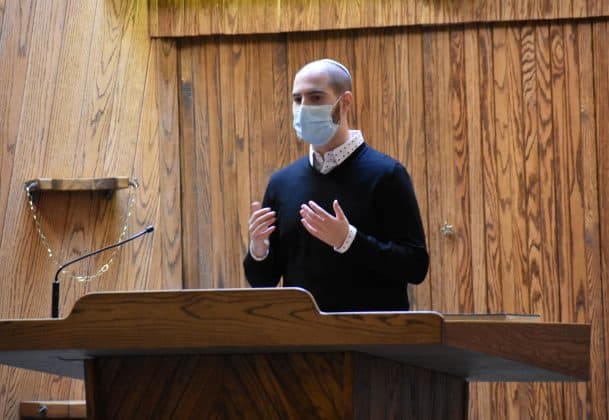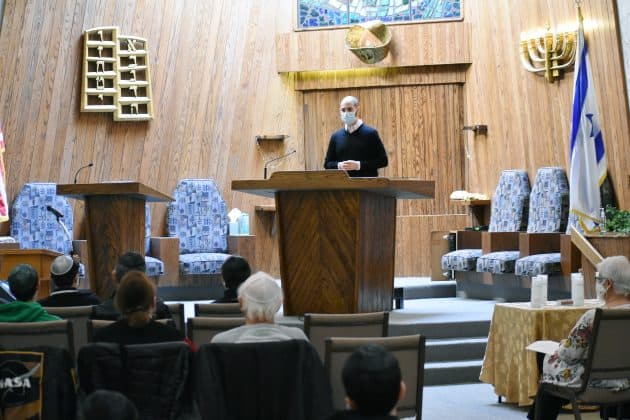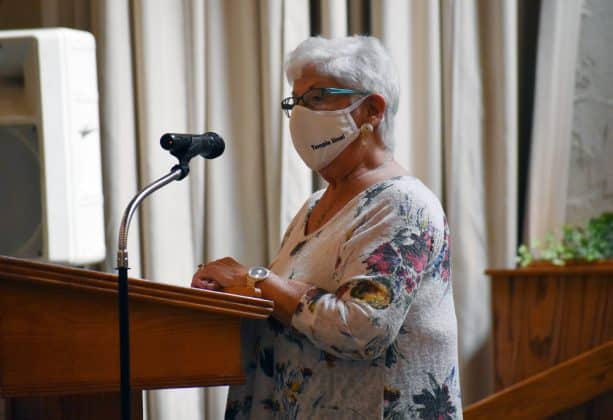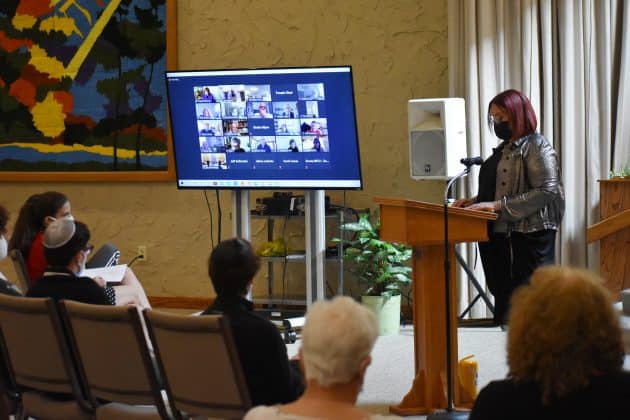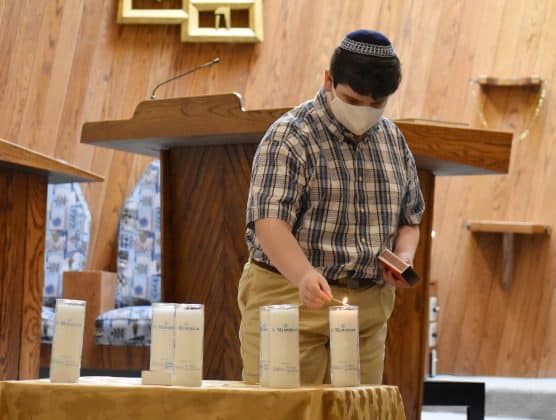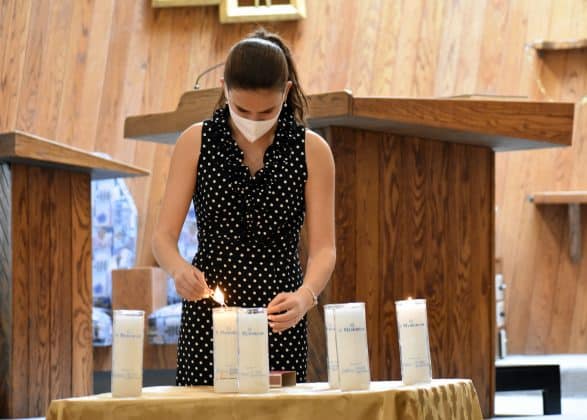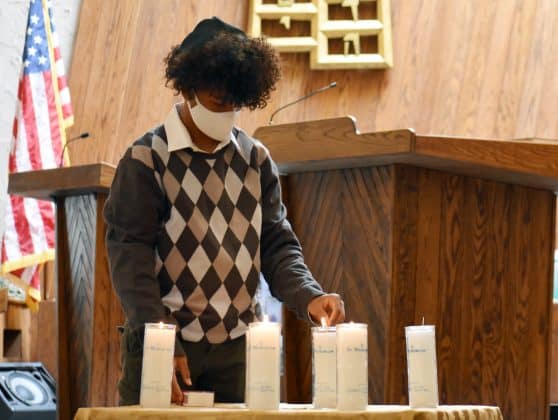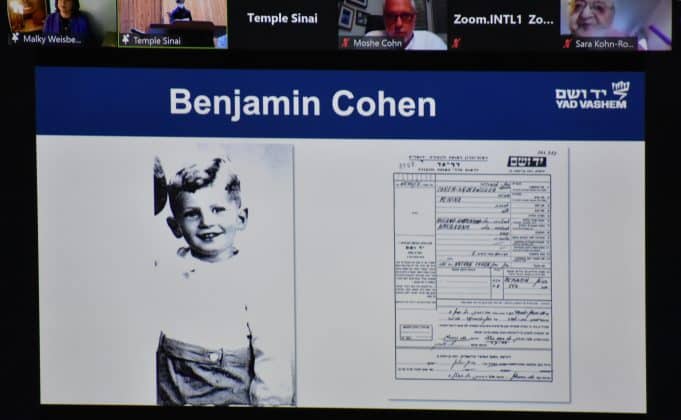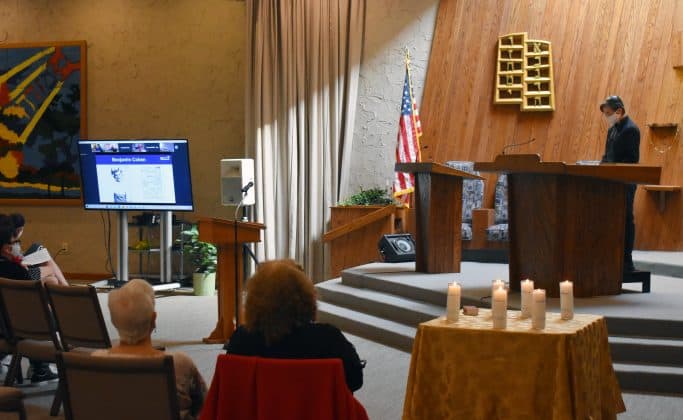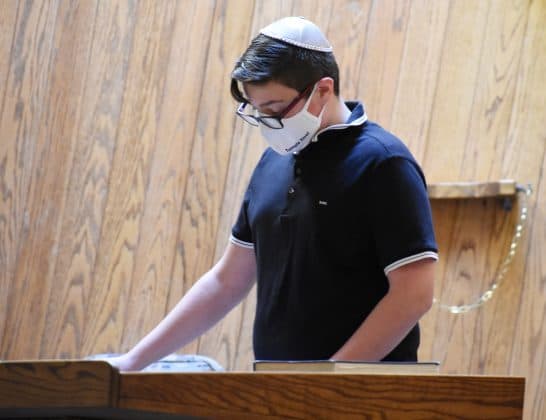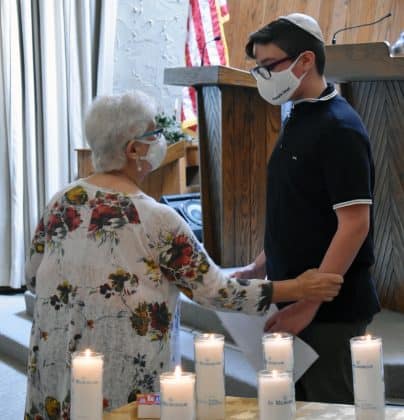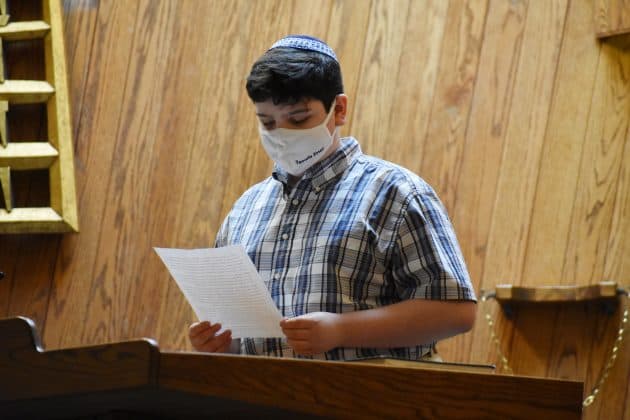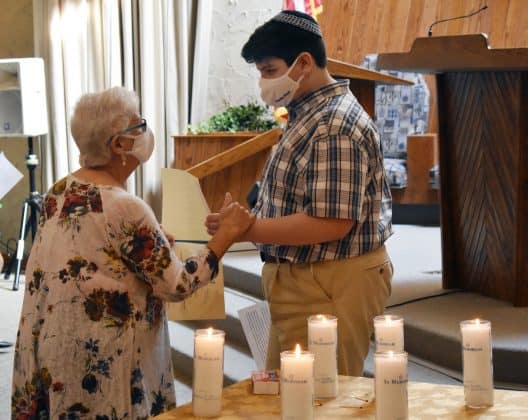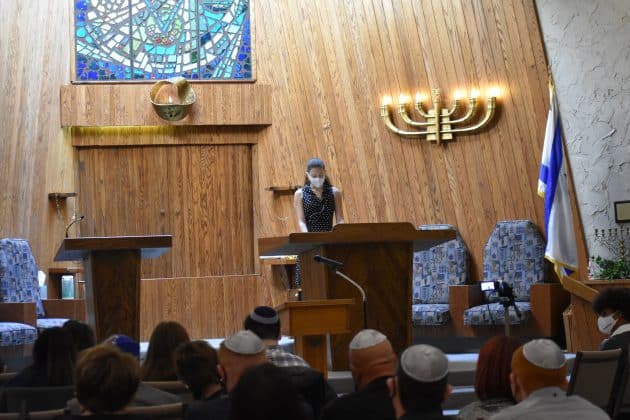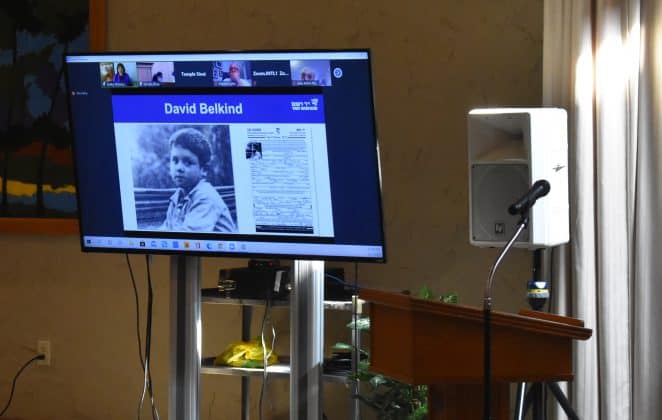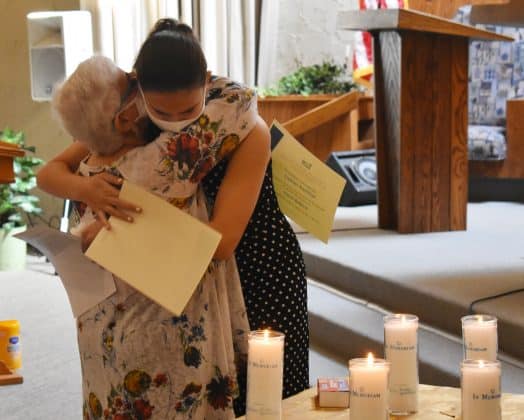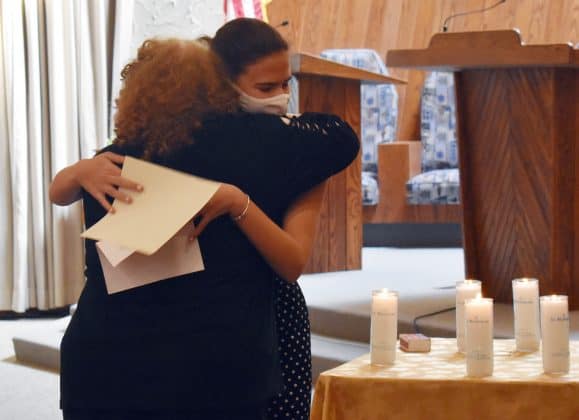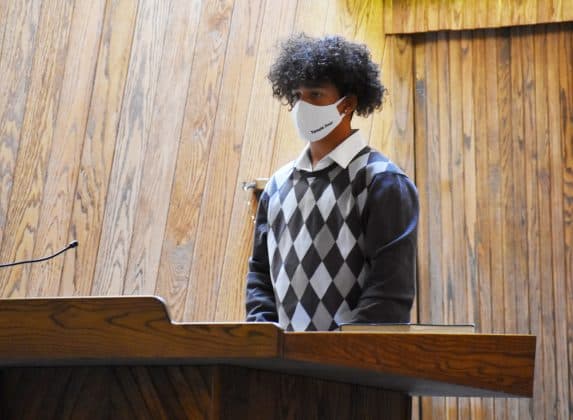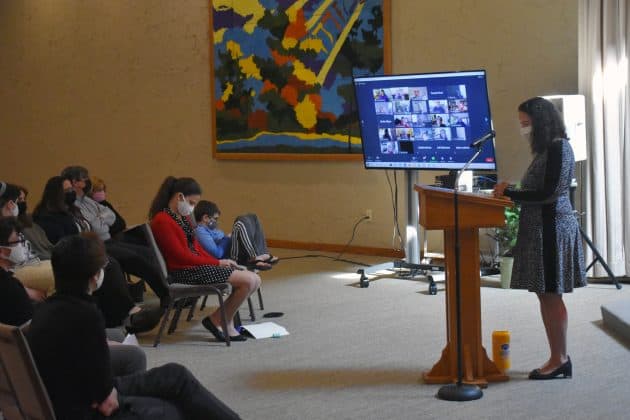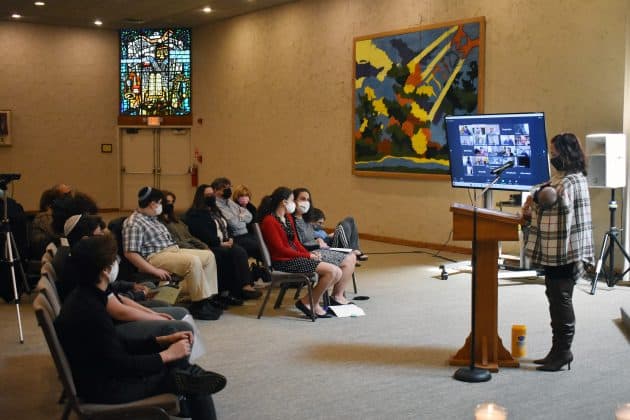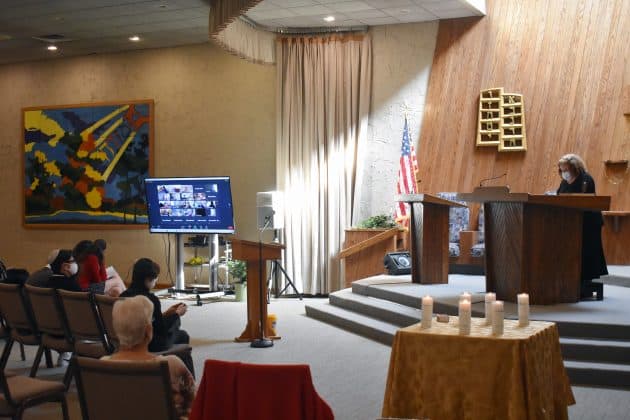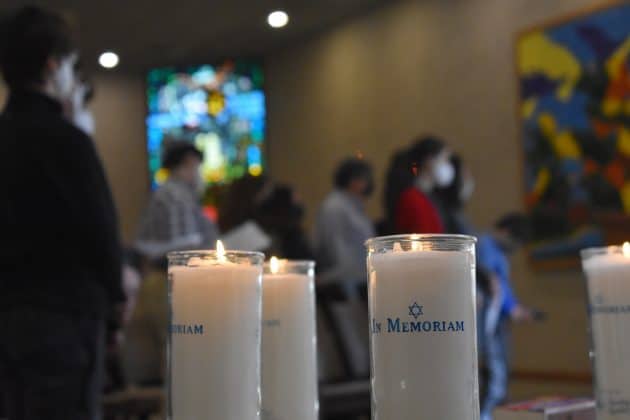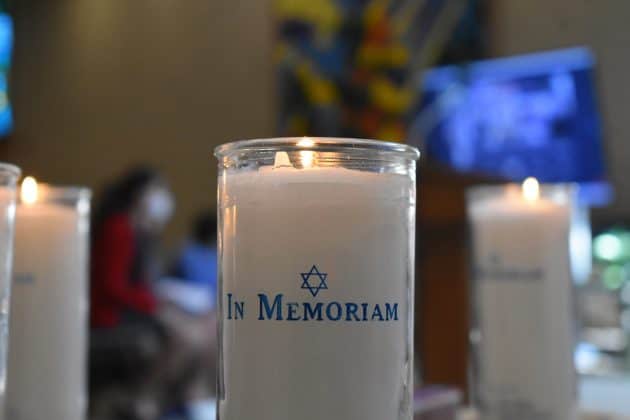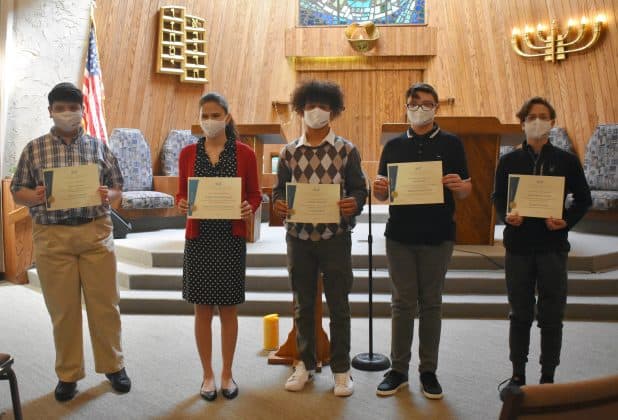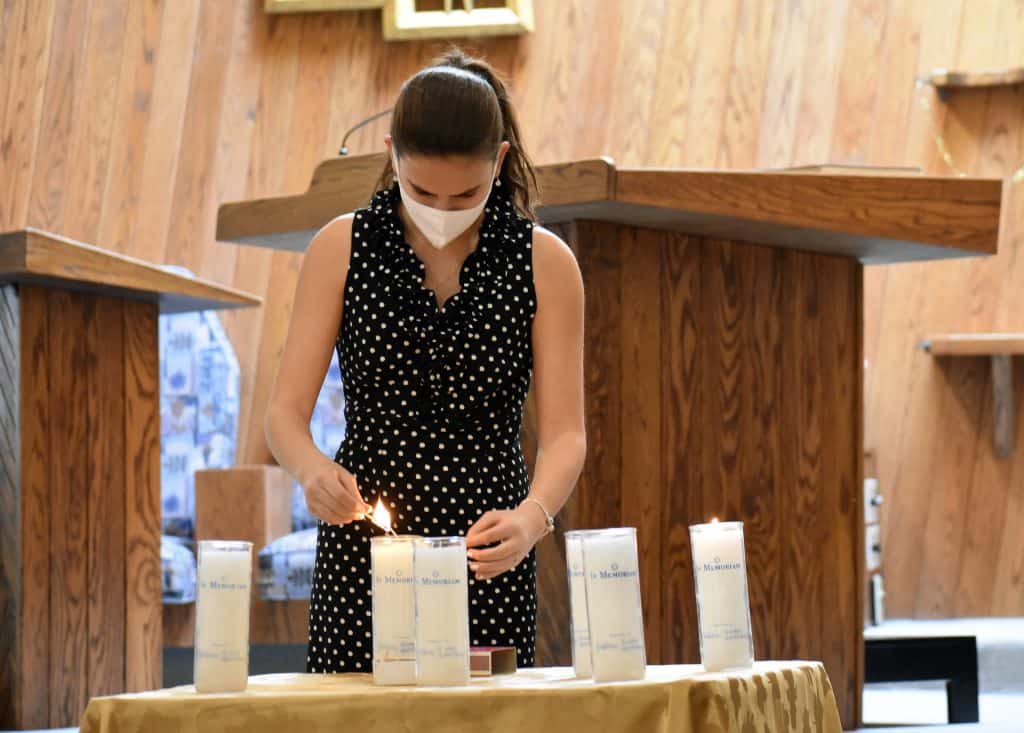
In a hollowed out underground cavern in Israel, five candles burn in a mirrored room, giving the illusion of light twinkling through eternal space.
Yad Vashem, The World Holocaust Remembrance Center, constructed its Children’s Memorial in 1987, serving as a tribute to the approximate 1.5 million children and adolescents who died during the Holocaust. A continuous looped recording recites each child’s name, age and place of death.
Benjamin Cohen is one of those names. At just 11 years old, he perished at the Sobibór German extermination camp in occupied Poland on July 23, 1943.
There is Edward Eliezer Faber, age 12, who was killed in Poland in 1939, shortly before the start of the Holocaust.
Ten-year-old Nahum Chertnik survived a massacre in his hometown of Rostov, Russia, in August 1942, only to be murdered in November alongside his twin, baby brother and mother.
At 10 years old, Roza Shoshana Tzukerman’s childhood in Poland was shattered when Germany invaded and occupied the country, and she would only live a few more years before her life was extinguished by the Nazis.
And then there is David Belkind, who lived through his mother’s murder on the steps of his grandparents’ home in 1941, only to be murdered himself a year later at the age of 12.
These are five of the 1.5 million children gone too soon due to the atrocities of the Holocaust, but thanks to Yad Vashem, they are remembered. And last week, thanks to five young people at Temple Sinai in Cinnaminson, Benjamin, Edward, Nahum, Shoshana and David were not only remembered but honored.
In celebrating their own b’nai mitzvahs, Jacob Adler, Zane Cohen, Daedrian Johnson, Natalie Rappaport and Ethan Schrier took part in the Yad Vashem Twinning Program, an effort that aims to connect Jewish youth around the world with individual children who were murdered during the Holocaust, strengthening the connection to their Jewish heritage. Participants receive a “twin” with whom they share a name, birthday or country of heritage. The ceremony is also an opportunity to pay tribute to these children who did not have the chance to mark their own coming of age celebration.
“In the Jewish faith, we have a sacred obligation to remember,” Temple Sinai Rabbi Michael Perice said at the March 7 ceremony. “Not only to honor the memories of those who have died, but to remind us of the possibilities in life, both the good and the bad, and that we all have the opportunity to learn from history to make the world a better place.”
While the Twinning Ceremony at Temple Sinai was kept relatively small due to COVID-19 safety guidelines, the synagogue was connected across the miles to Yad Vashem with the help of a large screen broadcasting a Zoom call with Malky Weisberg of Yad Vashem’s International Relations Division, the museum’s head of International Seminars Rabbi Moshe Cohn and a number of other dignitaries, family members and friends.
As each Temple Sinai youth took to the podium for their presentation, they shared whatever they were able to learn about their twin’s story – where they were born and where they died, how they lived, who they loved. The emotion, at times, was palpable as the tragedy of a Jewish life cut short during the Holocaust was juxtaposed with the freedom of religion afforded by the young people taking part in the ceremony.
“It is with great pride that I stand in front of you today and have a b’nai mitzvah on behalf of myself and a boy who never had this chance,” Adler said. The 12-year-old Cherry Hill resident was twinned with Edward Eliezer Faber.
“In my eyes,” Adler continued, “he was brave, noble and someone to look up to.”
Rappaport, also of Cherry Hill, was twinned with Roza Shoshana Tzukerman due to a shared name – Roza to Rappaport’s middle name, Rose. The 15-year-old discussed Shoshana’s birth in Poland in 1929 and the growth of antisemitism during her first decade of life.
“The first 10 years of her life, I am sure, were filled with love, but they also must have been tumultuous, stressful and confusing,” Rappaport said. “The first 10 years of my life were idyllic, filled with family, peace and Judaism.”
She compared their lives – Rappaport receiving her bat mitzvah date at 10, as Shoshana’s world was plunged into war at the same age. Rappaport became a bat mitzvah at 13, but Shoshana never had the chance to mark this rite of passage.
“When Shoshana was 13,” Rappaport said, “she became a mere memory to those she loved.”
The experience helped the students recognize things they take for granted, and also the many things their ceremonial twins missed out on.
“It really made me feel very grateful,” remarked Johnson, 14, who was twinned with David Belkind. “I was honored I could share my bar mitzvah with him.”
Cohen, a 13-year-old from Moorestown twinned with Benjamin Cohen due to their matching last names, said the experience was something he would “remember forever,” and Schrier, who matched with Nahum Chertnik because of his Russian ancestry, shared he would think of Nahum as he read from the Torah on his upcoming bar mitzvah day.
“I do not know much about Nahum,” the Cinnaminson 12-year-old said, “but I do feel a connection to him.”
Temple Sinai’s participation in the Yad Vashem Twinning Program was in large part due to the efforts of religious studies teacher Sara Kohn-Rosenberg, whose own father, Rabbi Murray Kohn, is a Holocaust survivor.
When Kohn-Rosenberg spoke, she referred to seeing the Children’s Memorial when studying under Rabbi Moshe Cohn at Yad Vashem. Seeing the reflection of lights representing the 1.5 million children lost during the Holocaust was part of the inspiration behind bringing the Twinning Program to Temple Sinai.
“It is my goal to make sure not one single light ever goes dim. Everybody should be remembered,” Kohn-Rosenberg said. “I really appreciate everything my students did. I am so proud of them.”
Temple Sinai President Johanna Schoss learned of the program from Kohn-Rosenberg and synagogue school director Marcia Blacker. She called the outcome remarkable.
“I was deeply moved by the level of emotional engagement the students showed and the degree to which this experience clearly impacted them. As a young man, my father survived the atrocities committed by the Nazis and the fascist Iron Guard in Bucharest, Rumania. So for me, the experience of the Holocaust is a near-experience. But for young generations, it is an increasingly distant experience,” Schoss said.
“So in that context, seeing these young people making the commitment to engage with this history gives me hope and encouragement that the past and the lessons we take from it will not be forgotten.”



